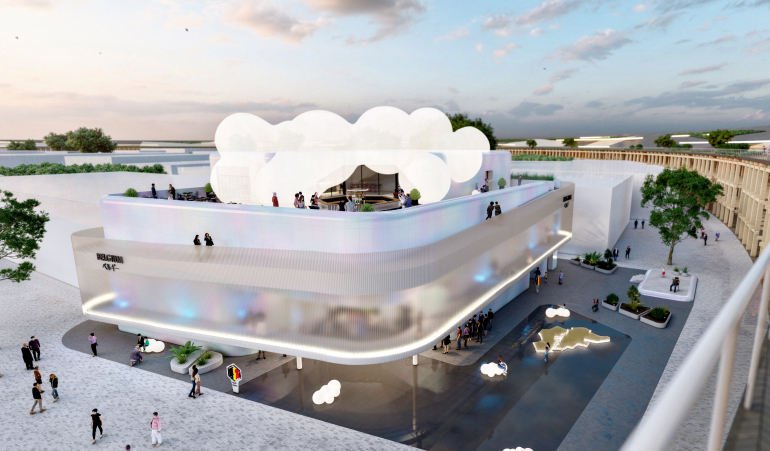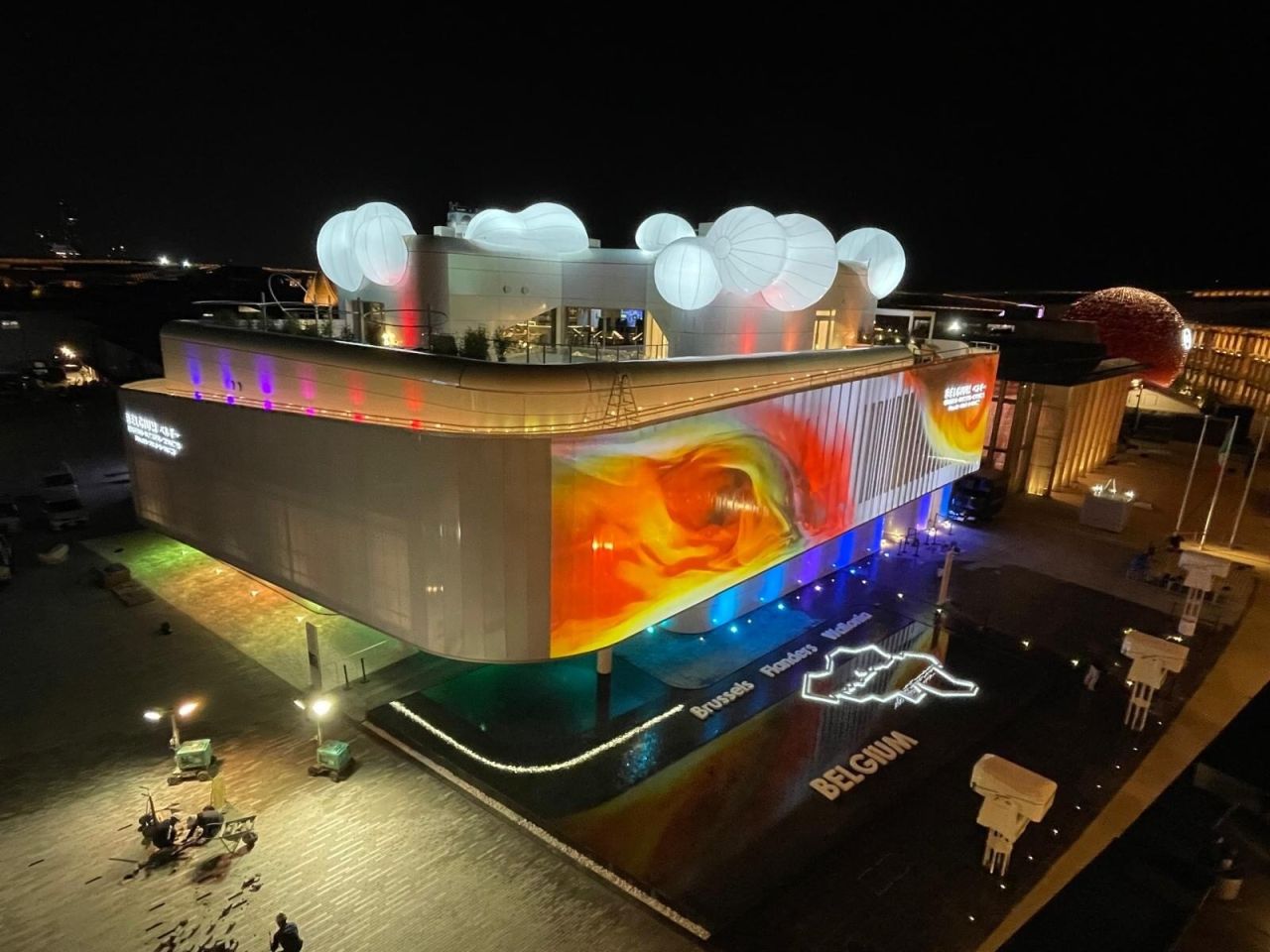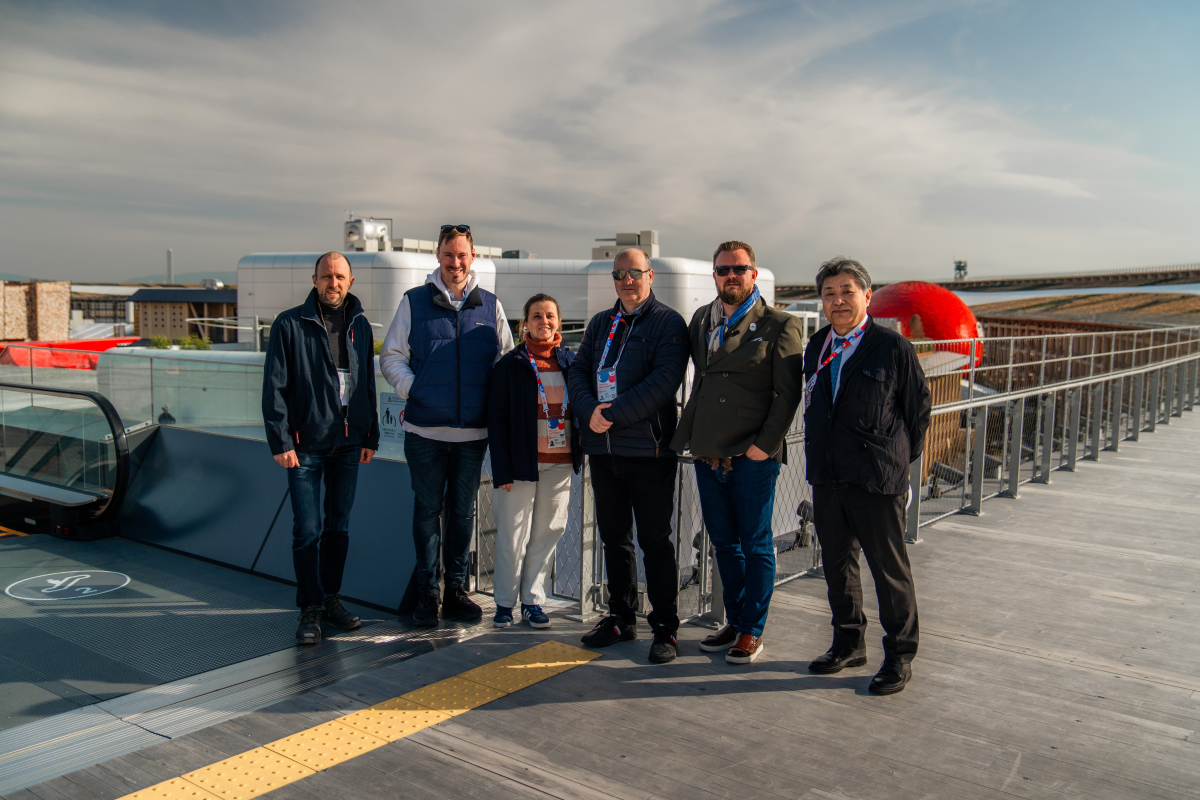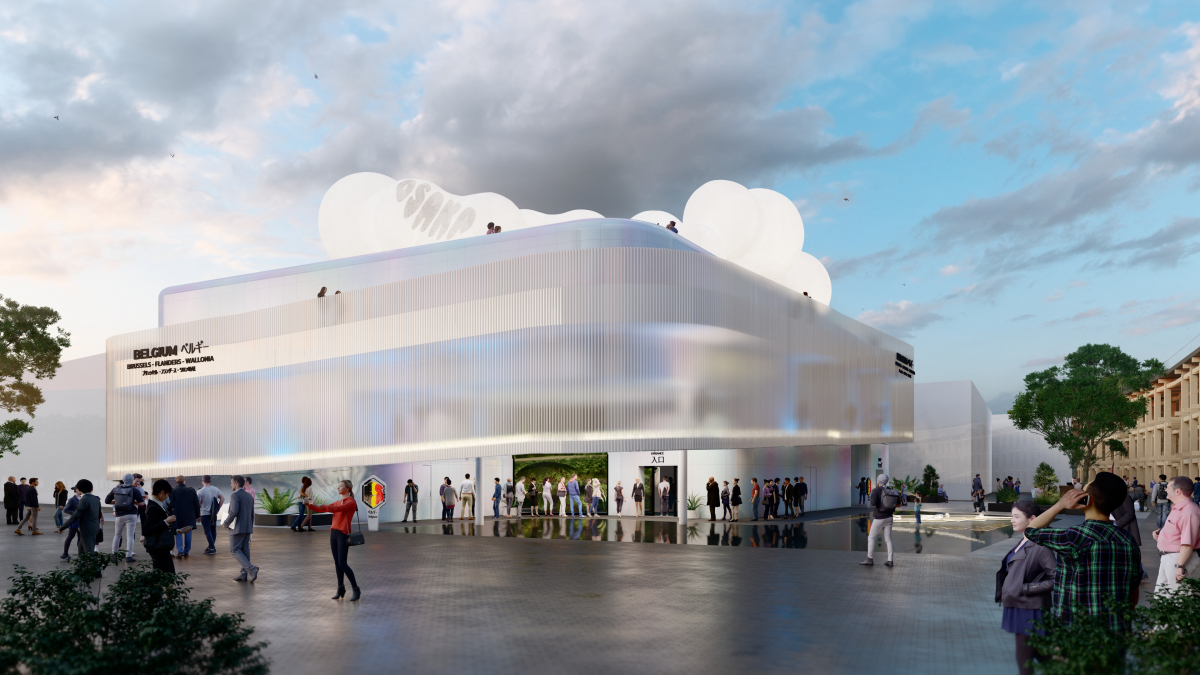
Since April 13, the Belgian pavilion has been open to the public at Expo 2025 in Osaka, Japan. The architectural design of the Belgian pavilion was entrusted to a Walloon architect: Cyril Rousseaux. He tells us the story behind the pavilion.
The architectural design of the Belgian pavilion at Expo 2025 in Osaka is the work of Cyril Rousseaux of the La Louvière-based architecture firm Carré 7. With this construction, he is fulfilling a dream. “Ever since I was 15, I said I wanted to be an architect, and I dreamed of doing public buildings: a school, a fire station, a police station. I never dreamed of making a house. When I was 11, I visited the Atomium in Brussels and was fascinated by the building. I later realized that it was a building from the 1958 Universal Expo. At university, I used to dream that our professors would give us the task of designing a pavilion to represent our country,” says Cyril Rousseaux, 44.
 ( (c) BelExpo)
( (c) BelExpo)
“I always dreamed of visiting a World Expo, but when I was old enough to travel, it was Shanghai. I come from a modest family, so I didn't have the means to pay for such a trip. The first Expo I was able to visit was in Milan in 2015. My wife and I took advantage of the fact that we were staying with her family in Naples to make a stopover in Milan with our three young children. It was a wonderful experience. We stayed two days at Expo. The children loved it, and it motivated me even more to one day take part in an Expo. For the 2020 Expo, which has been postponed until 2021, I had the opportunity to go to Dubai. A colleague from La Louvière had designed the pavilion. I loved it. I'd heard that the City of Namur had bought the Milan pavilion to put it at the Citadelle de Namur. I would have liked La Louvière to bring back the Dubai pavilion, but that didn't happen. So I said: “Next time, I'll win the competition and bring it back to La Louvière”. That's how the adventure began,” recalls Cyril Rousseau, who was able to count on a team behind him to make the project a reality.
 ( (c) BelExpo)
( (c) BelExpo)
The gamble paid off for Cyril Rousseaux, who developed the concept of his pavilion around water. “The general theme of the Osaka World Expo is “Designing the future, imagining tomorrow's life”. Belgium is located in the 'Save Lives' district. The scenography was very simple. The architecture of the building was more complicated. It took two months to come up with the architectural concept. We worked on the similarities between Belgium and Japan. Japan is an island. It's said that an island is born from four drops of water that fall from the sky. Japanese food is mainly fish-based. People purify themselves with water before entering temples. So water is omnipresent in Japan. As for Belgium, we have the sea and three major rivers, which are a source of income. We also have very important water sources. And then there's the national flag. It was a good starting point. When we left Covid, we said to ourselves that fortunately the virus hadn't reached the water. We came to the conclusion that without water, there is no life. Water gives life. That's how we came up with the idea of the icebox,” explains Cyril Rousseaux.
An ode to blue gold
The Belgian pavilion unveils itself as an ode to blue gold, featuring three states (solid, liquid and gaseous) through an architecture that is at once symbolic, immersive and poetic. The solid state takes shape with the icebox, a sculptural, closed volume clad in iridescent cladding that captures light like an ice crystal. The liquid state is reflected in a fluid, translucent ramp made of a vibrating, moving material that evokes the flow of water. All around, a water mirror invites visitors to walk with the flow, punctuated by playful jets.
The gaseous state is materialized by an astonishing inflatable structure, with ten white “clouds” floating above the pavilion, in a nod to the ten Belgian provinces and the Atomium.
At the end of the ramp, visitors enter the rooftop enveloped by misters, literally walking through water vapor in a sensory and refreshing experience.
 ( (c) BelExpo)
( (c) BelExpo)
Since Cyril Rousseaux was appointed architect for the Belgian pavilion, his architectural firm has been receiving more and more requests to build houses. “I feel a sense of pride on the part of people who say 'my architect is the architect of the pavilion'. The beauty of this project is that people are proud to see young people, Walloons and small architects from La Louvière succeed in doing the same thing as major international firms,” smiles Cyril Rousseaux.
And he's already looking forward to the next World's Fair in five years' time!
Isabelle Anneet (AWEX)